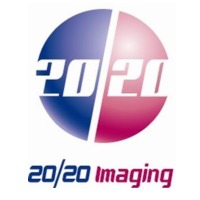PET Imaging Agent Developed to Detect Rapid Blood Vessel Formation of Breast Cancer
By MedImaging International staff writers
Posted on 04 Jul 2011
New research has the potential to help physicians detect breast cancer by imaging the proliferation of blood vessels carrying oxygen and nutrients to breast tumors. The study evaluated a new imaging agent that is naturally drawn to angiogenesis (development of new blood vessels in tissues both normal and cancerous). This process turns malignant during the growth stage of many cancerous tumors including those in breast tissue. Posted on 04 Jul 2011
"The positive outcomes of this study are encouraging and may provide clinicians with additional information for breast cancer management," said Andrei Iagaru, MD, lead author of the study and assistant professor of radiology and nuclear medicine at Stanford University Medical Center (Stanford, CA, USA). "PET [positron emission tomography] imaging with this agent could potentially lead to better clinical decisions; patients with progressive cancer who are ideal candidates for aggressive therapies could be identified earlier to improve their prognosis."
The new imaging agent central to this study is called 18F FPPRGD2, which combines the medical isotope fluorine-18 (18F) with a protein biomarker ideal for imaging the expression of an integrin known as αvβ3. Integrins are basically protein-based receptors that regulate the adhesion between cells and connecting tissues. They are also involved in cell signaling, which mediates a cell's shape, movement, and lifecycle, but their most useful characteristic is their key involvement in angiogenesis. Upon injection the agent seeks out tissues in a state of angiogenesis and is then captured using the molecular imaging technique PET, which generates functional imaging of the body.
Six female participants with breast cancer were recruited for the study and were imaged twice using 18F FPPRGD2 and 18F FDG PET/CT within two weeks. PET imaging with 18F FPPRGD2 demonstrated superior functionality for identifying angiogenesis in breast tissue, with strong uptake and distribution in both primary cancers and metastatic lesions.
Additional research evaluating the effectiveness of 18F FPPRGD2 for targeting breast tumor angiogenesis could lead to its availability for clinical use for patients known to have breast cancer. This agent could be an effective tool for cancer staging and may improve patient treatment planning as a result of the information it provides. Early findings show that it could become a useful weapon in the fight against breast cancer.
The study's findings were presented at the SNM's 58th annual meeting, held June 4-8, 2011, in San Antonio (TX, USA).
Related Links:
Stanford University Medical Center














